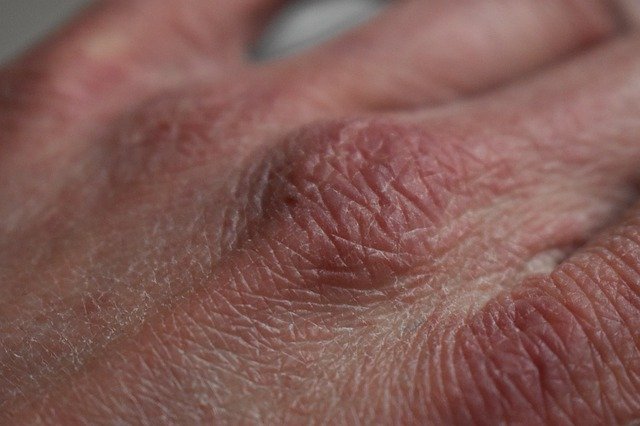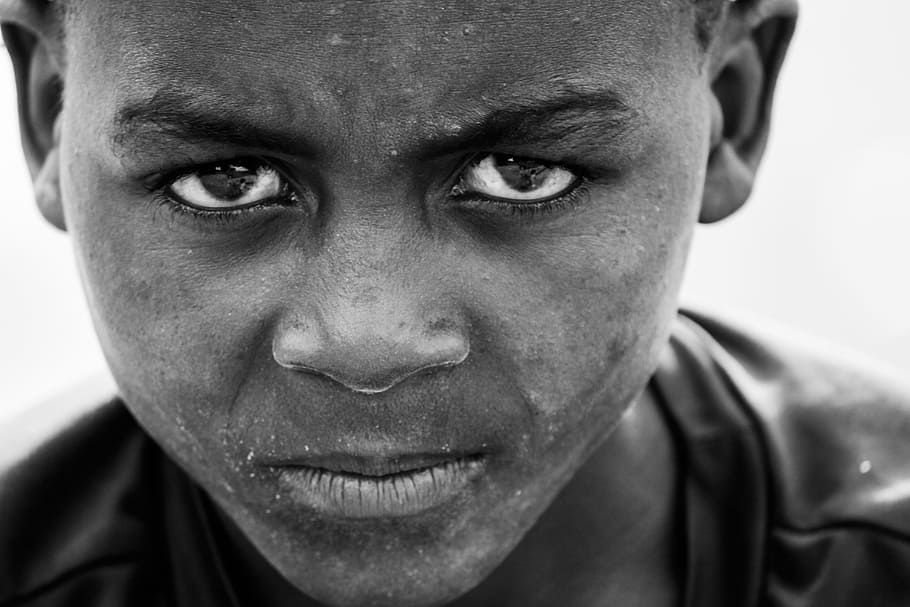What is the Difference Between Dry and Dehydrated Skin
Table of Contents
The key difference between dry and dehydrated skin is that dry skin is a type of skin that occurs when the skin lacks oils or lipids, while dehydrated skin is a skin condition that occurs when the skin lacks water.
Human skin is the largest organ in the integumentary system of humans. It is the outer covering of the body. The skin has seven layers of ectodermal tissues. These tissues guard the underlying muscles, bones, ligaments, and internal organs. The skin has three primary layers: epidermis, dermis, and hypodermis. The epidermis is further divided into five sub-layers as well. Dry and dehydrated skin are two different concerns related to skincare. They also have different causes.
CONTENTS
1. Overview and Key Difference
2. What is Dry Skin
3. What is Dehydrated Skin
4. Similarities – Dry and Dehydrated Skin
5. Dry vs Dehydrated Skin in Tabular Form
6. Summary
What is Dry Skin?
Dry skin is a skin type that occurs when the skin does not have sufficient oils or lipids. We can categorize skin types into classified as normal, combination, and oily. People are usually born with one type of skin. However, the skin type can change with age and season. Dry skin is a very uncomfortable condition. It has marked scaling, itching and cracking. When people have dry skin, their sebaceous glands do not produce enough natural oils. The signs of dry skin include scaly skin, white flakes, redness, and irritation. Sometimes, dry skin is associated with skin diseases such as psoriasis, eczema, and post-acne breakouts.

Dry skin can occur due to various reasons. Exposure to dry weather conditions, hot water, and certain chemicals can cause dryness in the skin. Dry skin can also occur due to a result of underlying medical conditions. Dermatitis is the common medical term for extremely dry skin. There are several types of dermatitis, such as contact dermatitis, seborrheic dermatitis and atopic dermatitis. Dry skin can affect anyone. But certain risk factors such as age, medical history, season and bathing habits play a pivotal role. This condition can be diagnosed through an allergy test, blood test or skin biopsy. The treatment will depend on the cause of the dry skin. A doctor may recommend over the counter prescription ointments, creams, topical steroids, or lotion to treat the symptoms of the skin. Moisturizers, lotions, and antioxidants can often maintain normal skin conditions.
What is Dehydrated Skin?
Dehydrated skin is a skin condition that occurs when the skin does not have a sufficient water content in the top layer of the skin (stratum corneum). Sometimes, it can be dry, itchy, or quite dull looking. The overall tone and complexion are also uneven. Fine lines are more noticeable. But it is relatively easy to treat with the right lifestyle. Symptoms of dehydrated skin include itchiness, dullness, darker under-eye circles, shadows around the face, sunken eyes, the appearance of fine lines, dizziness, dry mouth, faintness, light-headedness, overall weakness, dark urine, etc. This condition is diagnosed through a simple pinch test.

Treatment for dehydration is based on lifestyle changes such as drinking plenty of water, eating water-rich veggies and fruits, taking electrolyte beverages, consuming broth-based soups and drinking less alcohol or caffeine. However, severe dehydration should be addressed by taking intravenous fluid at a hospital.
What are the Similarities Between Dry and Dehydrated Skin?
- Dry and dehydrated skin are two concerns related to the skin.
- Both are caused due to a lack of key molecules in the skin.
- Both concerns should be addressed with a dermatologist.
- They are both treatable.
What is the Difference Between Dry and Dehydrated Skin?
Dry skin is a skin type that lacks oils or lipids, while dehydrated skin is a skin condition that occurs when the skin lacks water. So, this is the key difference between dry and dehydrated skin. Furthermore, dry skin is relatively difficult to treat, while dehydrated skin is relatively easy to treat. Thus, this is another difference between dry and dehydrated skin.
Below is a list of differences between dry and dehydrated skin in tabular form for side by side comparison.
Summary – Dry vs Dehydrated Skin
Dry and dehydrated skin are two different concerns associated with the skin. Dry skin is characterized by fewer oil-producing glands on the skin, while dehydrated skin is characterized by the lack of water on the skin. Thus, this is the key difference between dry and dehydrated skin.
Reference:
1. Duncan, Allison. “Here’s How to Tell If Your Skin Is Dry or Dehydrated.” Allure, 22 Aug. 2018.
2. Debara, Deanna. “Dry vs. Dehydrated Skin: 8 Traits to Help You Tell the Difference.” Healthline, Healthline Media, 14 Mar. 2019.
Image Courtesy:
1. “Dry-skin-hands-health-lotion-hand-4769578” (CC0) via Pixabay
2. “Grayscale photography, boy face, boy, african, africa, child, portrait, culture, ethnicity, tribe” (CC0) via Pxfuel
ncG1vNJzZmivp6x7pbXFn5yrnZ6YsqOx07CcnqZemLyue9ahmK1lmah6tbTEZpuinpaav6a6wp5km52krLKmuoydqbJlkaOxbrDEobCdqpGpsqV50qSgp2c%3D